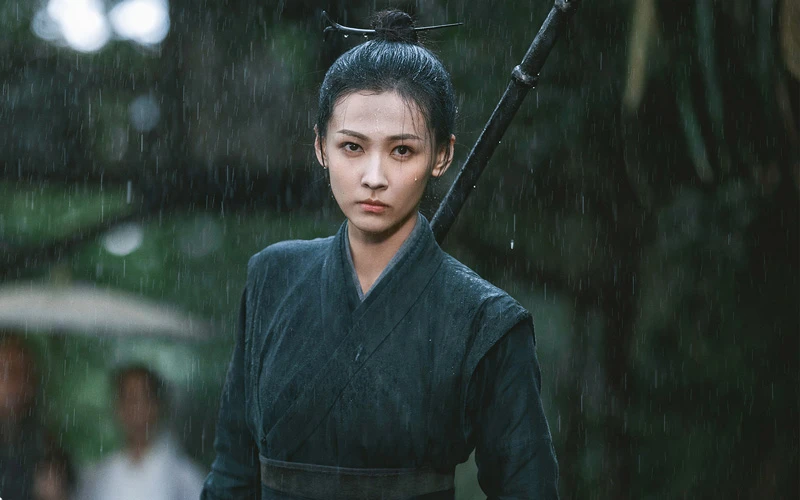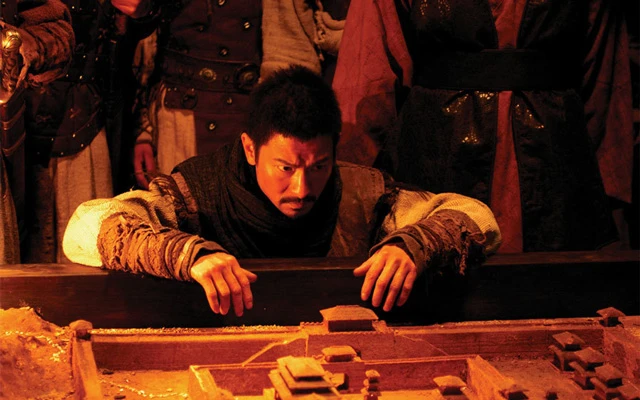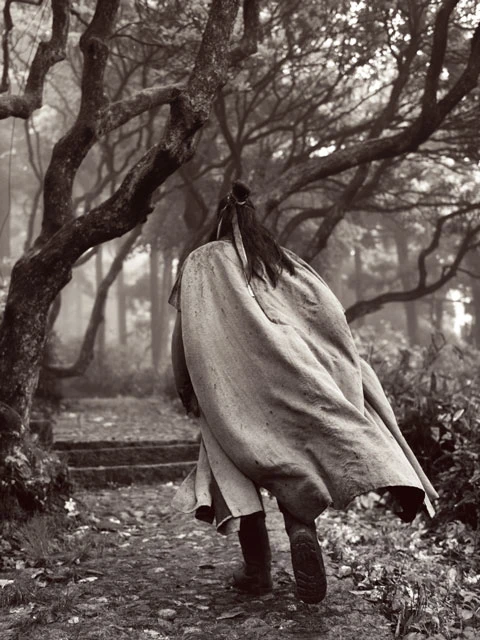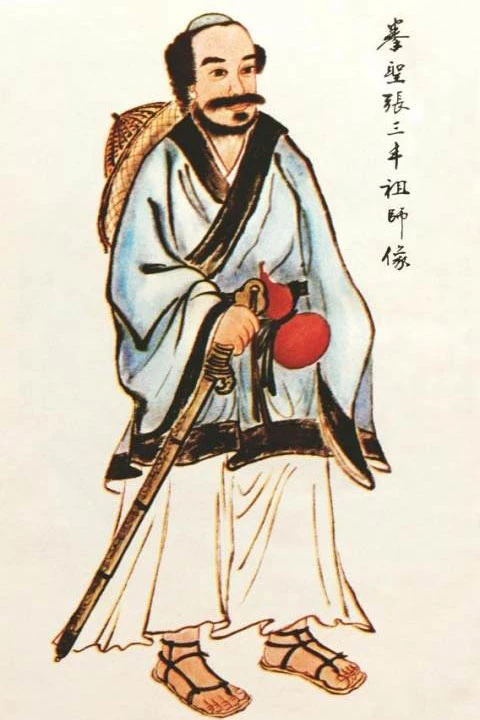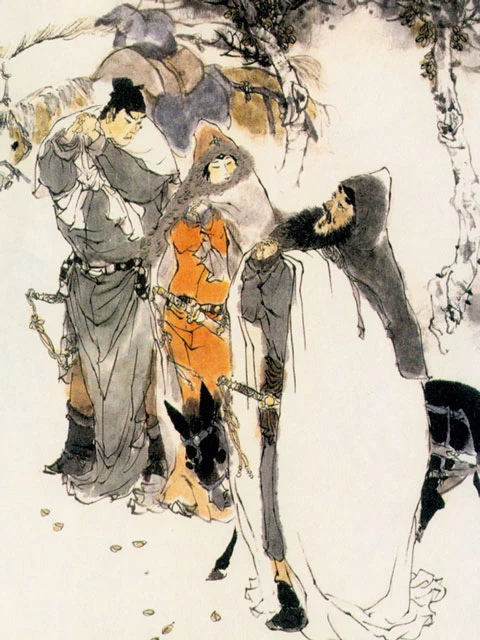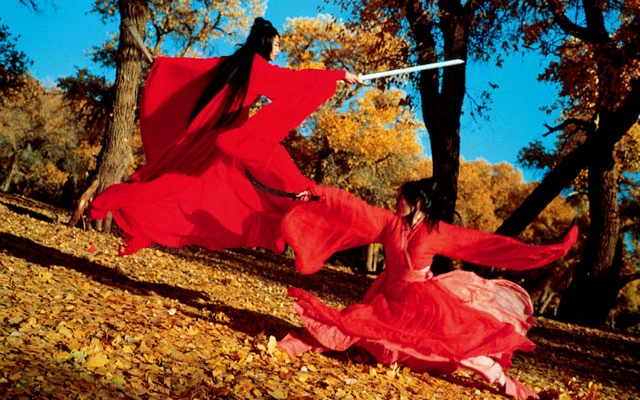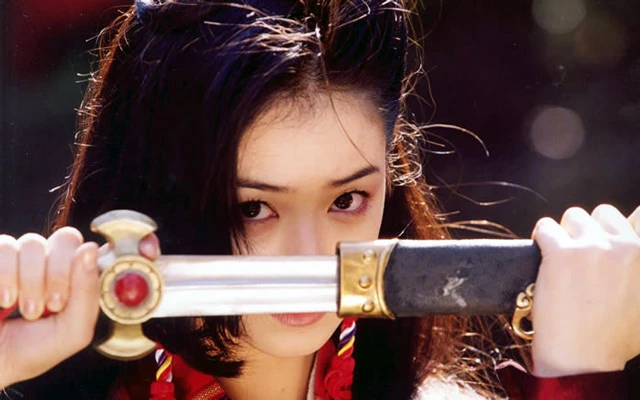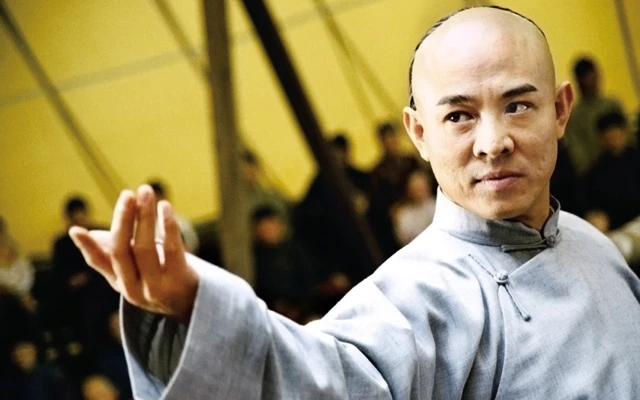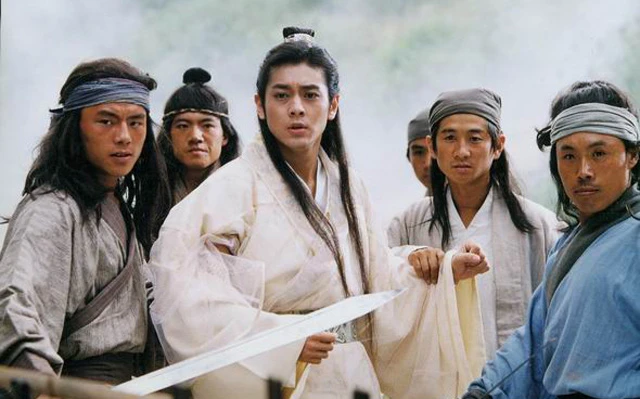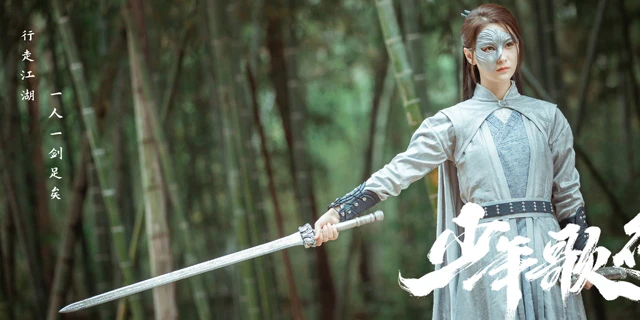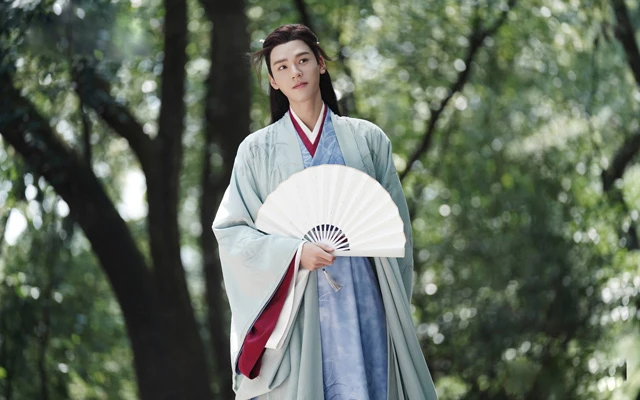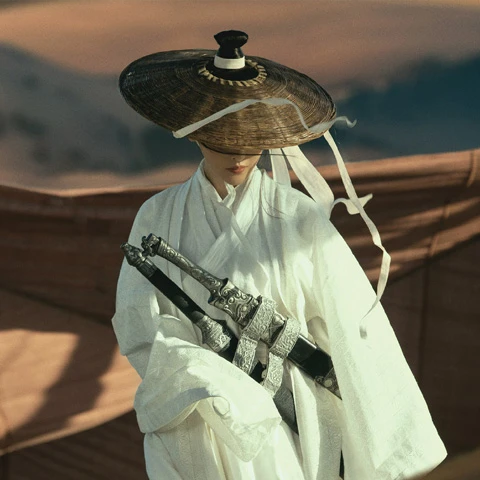What is Xia? Some say they are skilled warriors, others say they are outsiders on the fringes of society, and some even say it is an adult fairy tale. A knight-errant can take on many forms, but one thing is certain: from the moment they step onto the stage of history, their extraordinary allure ensures that the concept of a "Xia" will never fade away. What is Xia? Who can be called a knight-errant? To answer these questions, let us first go back to the Spring and Autumn Period and the Warring States Period, when knights-errant roamed.
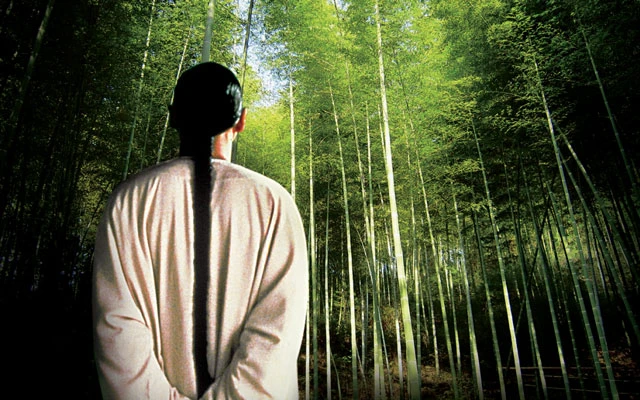
01 When did ancient China have Xia?
During the Pre-Qin period, warfare was frequent. One day, the powerful state of Chu was preparing to attack the weak state of Song and hired the renowned craftsman Lu Ban to create siege weapons. The military strength of Song was far inferior to that of Chu, and the people were filled with fear, scattering in all directions in an attempt to escape. Mozi, who had a deep background in craftsmanship and was skilled in defending cities, received this news and immediately rushed thousands of miles to the capital of Chu, hoping to utilize his expertise and contribute his own strength to prevent this act of unjust aggression.
When Mozi met the King of Chu, he took off his belt and fashioned it into the shape of a city, using small pieces of wood as defensive equipment, and began practicing offense and defense with Lu Ban. Lu Ban repeatedly deployed clever and ingenious siege weapons, but Mozi resolved each one. In the end, Lu Ban ran out of weapons, while Mozi still had many methods of defense remaining. The King of Chu had initially believed that his weapons were superior and that the odds of victory in attacking Song were high, but now, seeing Mozi neutralize each threat one by one, he had to reconsider his plan to attack Song.
Seizing the opportunity, Mozi analyzed the situation and eloquently exposed the drawbacks of launching this unjust war, ultimately convincing the King of Chu to abandon his plan to attack the state of Song. Although no actual combat took place in this confrontation, Mozi's actions of risking angering the powerful, unconditionally aiding the weak, and expecting nothing in return already embody the traditional Chinese ideals of chivalry.
And when did martial knights-errant appear? Ever since human society emerged, along with the concepts of nation, class, and class oppression, along with social injustice and inequality, the concept of martial knights-errant came into existence. In our collective memory, the earliest knights-errant we think of are the two types recorded in "Records of the Grand Historian": assassins and wandering knights.
The great historian Sima Qian wrote about five assassins who are the most representative: Jing Ke, Zhuan Zhu, Nie Zheng, Yu Rang, and Cao Mo. They were each entrusted by someone and carried out assassinations to repay a debt of gratitude. This self-sacrificing spirit for justice constitutes the fundamental element of a knight-errant.
Among the five assassins, Jing Ke and Yu Rang failed in their assassination attempts and died on the spot, while Zhuan Zhu and Nie Zheng succeeded in their assassinations but also died immediately. Only Cao Mo succeeded and managed to escape unharmed. From this, we can see that being an assassin is a perilous undertaking. "The wind howls and the waters of the Yi River turn cold; the valiant warrior departs and never returns" is a description of such heroic deeds.
These assassins were so dedicated to their so-called chivalry that they were almost obstinate to the point of being eccentric. For example, there was Yu Rang, a disciple of Lord Ji of the state of Jin. In 453 BC, during the chaotic Spring and Autumn Period, Lord Ji of Jin was killed by Zhao Xiangzi of the state of Zhao. Yu Rang swore to avenge his master. However, his assassination attempt failed. In order to avoid being recognized by the enemy, Yu Rang smeared paint on his face to disfigure himself and swallowed coal to change his voice. He begged for a living on the streets, biding his time for the unfinished assassination.
A friend, weeping, tried to persuade him: "With your talents, why don't you join forces with Zhao Xiangzi? Why do you torment yourself like this?" Yu Rang replied firmly, "If Zhao Xiangzi places trust in me and gives me a sense of duty, then I cannot assassinate him anymore." After another failed attempt, Zhao Xiangzi asked him, "Lord Ji was not your first master, why do you insist on seeking revenge for him?" Yu Rang confidently replied, "Others treat me as an ordinary person, and I treat them as ordinary people as well. Only Lord Ji regarded me as a loyal subject, so I must repay him with the dignity of a loyal subject!" This is a typical example of "a loyal subject willing to die for a kindred spirit".
What is thought-provoking is Zhao Xiangzi, who was faced with a "terrorist" attempting to take his life, yet was moved by the assassin's loyalty and courage. After Yu Rang's second failed assassination attempt, in order to fulfill the assassin's symbolic desire, Zhao Xiangzi offered his own clothes and allowed Yu Rang to ruthlessly stab him several times. Zhao Xiangzi's act of sacrificing a part of his own interests to establish the assassin's reputation exemplifies the chivalrous spirit of self-sacrifice for others.
The Spring and Autumn Period was already a time of chaos, and as the name suggests, the Warring States Period was even more turbulent with frequent wars. In such a social environment, certain individualistic heroes were willing to abandon everything to fulfill a bond of gratitude, acting as assassins and displaying an extraordinary chivalry that set them apart from ordinary people. Alongside the righteous assassins, the wandering knights showcased a pursuit of freedom.
In "Records of the Grand Historian - Biographies of Wandering Knights," there are two individuals, Ji Ci and Yuan Xian, who spent their lives living in empty grass huts, "embracing the virtues of a solitary gentleman, adhering unwaveringly to their own principles of righteousness." This behavior brings to mind the teachings of Zhuangzi.
Legend has it that Zhuangzi was fishing on the Pu River when the King of Chu sent two ministers to invite him to come out of seclusion and serve as the Prime Minister. Without even turning his head, Zhuangzi replied, "I have heard that the King of Chu possesses a divine turtle that has been dead for three thousand years. The king wraps it in a bamboo box and a silk cloth, and keeps it enshrined in his court. Tell me, would the divine turtle prefer to die and leave behind its shell for people to worship, or would it rather drag its tail in the mud and water?" The Chu emissaries responded, "It would rather drag its tail in the mud and water." Zhuangzi said, "Then go away and let me drag my tail in the mud and water." With this statement, Zhuangzi expressed his refusal to compromise his ideals for the sake of the court, and this is precisely the pursuit of the wandering knights.
Why do the knights-errant not cooperate with the authorities? Han Feizi explains it clearly in his "Wu Du": "The Confucian scholars use culture to subvert the law, and the knights-errant use martial arts to violate prohibitions." Seeking personal vengeance, killing the rich to aid the poor, and resisting the government, the actions of the knights-errant are all things that the ruling powers and laws do not permit. And in order to succeed in such chaotic times, extraordinary skills are a necessity. Thus, since its inception, the term knight-errant has been inseparable from martial arts. The use of violence to counter violence is the combination of means and ends. Therefore, when assassins and wandering knights merge into one, the martial knight-errant is born.
02 The transformation of small righteousness into great
When exploring the essence of martial knight-errantry, it is not difficult to see the many Chinese cultural thoughts and behavioral norms that are now ingrained in our daily lives. The formation of knight-errant culture is closely related to the social environment in which it emerged. During the Spring and Autumn Period and the Warring States Period, there was a multitude of schools of thought, with Confucianism, Daoism, and Mohism inevitably becoming the behavioral standards of the time, affecting both assassins and wandering knights.
For example, the Confucian concept of "doing what is right despite knowing it is impossible" embodies a spirit of heroism; the Daoist reminder to not compromise with the government represents a carefree style; and Mohism advocates for "universal love" and the sacrifice of oneself for the benefit of others. It is widely accepted in academic circles today that the spirit of sacrificing oneself for the welfare of the world, as advocated by Mohism, is the earliest embodiment of the spirit of martial knight-errantry.
Undeniably, the thoughts advocated by the philosophers of the Pre-Qin period have influenced the Chinese people throughout the successive dynasties, inspiring the strong to aspire to chivalry and the weak to yearn for the encounter with a knight-errant.
From the Pre-Qin period to the Han and Tang dynasties, various distinct images of knights-errant continued to emerge: Guo Jie, Hongfu, and Li Jing inherited the spirit of righteousness, fearlessness, and selflessness from the Pre-Qin period.
During the relatively peaceful Southern Song Dynasty and the national crisis, the emphasis on righteousness by the knights-errant evolved into serving the country and the people, transforming small righteousness into great righteousness, and shifting from private righteousness to public righteousness. The realm of life for the knights-errant was greatly elevated.
For example, during the late Qing Dynasty, when the country faced internal and external troubles, Huo Yuanjia and his Jingwu School displayed the spirit of national heroes in the martial arts arena. Although the outcome was lamentable, in that turbulent era, the resounding roar of not wanting to be a sick man of East Asia awakened the millions of sons and daughters of China from their slumber, inspiring them to fight tenaciously and resist foreign aggression.
It was during the revolutionary movements of the late Qing Dynasty that many people began to advocate for the spirit of knight-errantry from a spiritual perspective. Lu Xun greatly admired a kind of iron-blooded spirit with chivalrous undertones.
The famous revolutionary activist Qiu Jin referred to herself as the "Lady Knight of Jianhu." Many revolutionaries, like Qiu Jin, adopted a pseudonym that reflected the spirit of knight-errantry, considering themselves as knights-errant.
Examples include Wu Yue, known as "Meng Xia," who assassinated five high-ranking officials of the Qing court, Chen Qubing, associated with the "chivalrous spirit of the Jianghu," Li Pengchun, the "Ma Xia" from Northeast China who assisted Song Jiaoren, and Hu Lian, referred to as the "Xia Shuai."
They believed that in order to change the reality of China at that time, a spirit of chivalry was indispensable. Qiu Jin, who later failed in her uprising, met her death with composure at Xuantingkou in Shaoxing, Zhejiang. She was a great female knight who sacrificed herself for the country.
The concept of "Xia" in martial arts novels is not an objectively existing entity that can be described in a few words, but rather a fusion of historical records and literary imagination, as well as a fusion of social norms and psychological needs, and a fusion of contemporary perspectives and literary characteristics.
Undeniably, as time has progressed to the present day, the image of a knight-errant in people's minds is almost entirely derived from literary works, or rather, from the individuals who created these works. The concept of a knight-errant in their minds has made modern knights-errant more diverse, but the sense of serving the country and the people remains unchanged.
03 Why do we all love Jin Yong?
In the 1950s, martial arts novels began to flourish in Hong Kong and Taiwan. In his novels, Jin Yong raised the question of the ultimate destiny of individual lives, expressed through the words of his characters as "serving the country and the people, the great righteousness of chivalry." The best examples of this are Guo Jing and Xiao Feng.
After becoming a great knight-errant, Guo Jing helped defend Xiangyang for the Song Dynasty and ultimately sacrificed himself along with the city, fulfilling his mission. Xiao Feng, the leader of the Beggar Clan, possessed unparalleled martial arts skills, but he was always troubled by his Khitan heritage and his identity as the leader of the Han people. He did not want to betray his homeland or take lives, and in the end, he sacrificed himself to atone for the world. Many readers of "Demi-Gods and Semi-Devils" were deeply moved by the section where Xiao Feng takes his own life. Xiao Feng's sacrifice for the greater good of the people is one of the greatest heroic images in literary history.
We admire Jin Yong for his solid foundation in literature and history, exceptional writing style, and remarkable talent. His works embody the rich cultural essence of China, incorporating extensive knowledge and allusions from history, literature, philosophy, religion, medicine, and more, showcasing the traditional virtues and spiritual pursuits of the Chinese nation. However, these are not the fundamental reasons why we love Jin Yong. Essentially, it is because his works have shaped a martial arts world full of idealism, where good deeds are rewarded, evil deeds are punished, efforts are eventually rewarded, justice triumphs over evil, and lovers are united. Martial arts novels are fairy tales for adults.
In "Records of the Grand Historian," Sima Qian said, "Although the actions of these wandering knights may deviate from righteousness, their words are trustworthy, their actions are decisive, their promises are sincere, and they are willing to sacrifice themselves for the sake of others. Having experienced life and death, they do not boast of their abilities or flaunt their virtues. There are indeed many such individuals."
This passage provides a concise summary of the spirit of Xia. Sima Qian does not mention martial arts here; in his view, chivalry primarily refers to a spirit that can exist without martial skills. When he says "deviate from righteousness," he means that the words and actions of these chivalrous individuals may not conform to mainstream society, as they do not blindly follow the crowd.
However, they are trustworthy in their words and decisive in their actions, valuing loyalty, integrity, and keeping their promises. At the same time, they do not excessively cherish their own lives, prioritizing helping others overcome difficulties of life and death. After saving others, they do not boast of their abilities but remain humble. Only in this way can they be considered chivalrous. Do such chivalrous individuals still exist in modern society? The answer is undoubtedly yes.
When martial arts, a combat culture that has been inherited and developed in China for thousands of years, is no longer necessary for our survival, and when it is no longer a powerful tool to resist the strong and assist the weak, chivalry and martial arts have become separate. However, the spirit of chivalry has not vanished but has acquired new meanings and new forms in the new era. This can be seen as the legacy of martial arts.
Who says there are no knights-errant in modern society? Even those without martial arts skills can become great chivalrous individuals. Who says the spirit of chivalry has become a discarded legacy? The spirit of chivalry is still present in the blood of every individual.
